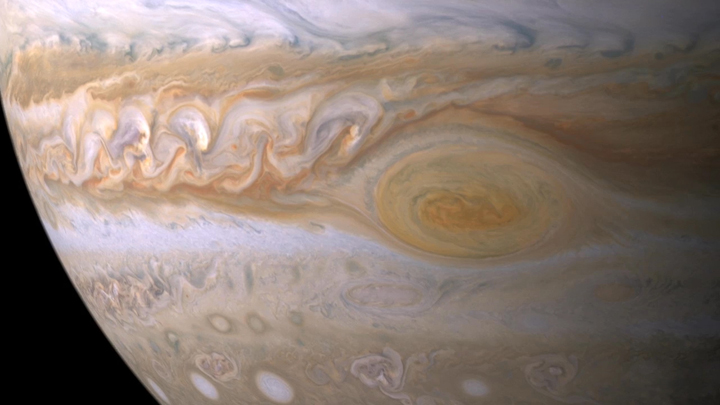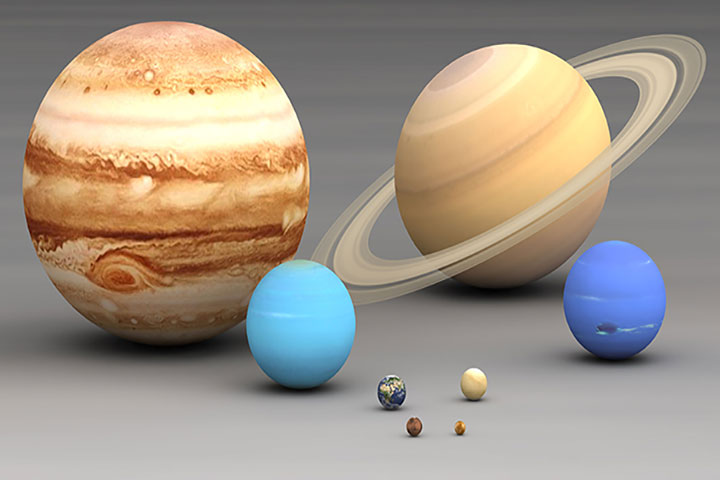NASA scientists have referred to Jupiter as “the biggest and baddest planet in the solar system” — with good reason. It is the largest, most massive body aside from the sun, and its influences are felt throughout our cosmic neighbourhood, from being able to fling comets on different trajectories, to tugging on the orbits of all the planets.

Jupiter is the bad boy of all the planets, and it is for that reason that scientists are eager to further explore this enormously influential planet. That’s why NASA has sent its Juno spacecraft, which safely reached orbit around Jupiter on Monday, to probe deeper into Jupiter and its mysteries.
READ MORE: Juno mission to Jupiter—NASA spacecraft arrives at giant planet
Juno’s mission will shed light on some of the mysteries of Jupiter and help us better understand the evolution of our solar system. Here are some numbers about big, bad Jupiter.
20 million
Magnetic fields are measured in rads. While here on Earth, our magnetic field measures around 1/3 of a rad, Jupiter’s incredible magnetic field tops off at near 20 million. It’s for this reason that NASA engineers held their breath as Juno approached on July 4. The spacecraft’s orbit takes it roughly 5,000 km above Jupiter’s cloud tops, well within its powerful magnetic field. No other spacecraft has had to endure that kind of radiation.
WATCH: Jupiter: Into the Unknown (NASA Juno Mission Trailer)

1,300
Jupiter is a massive planet. Its size influences comets and asteroids (as was witnessed in 1994 when Comet Shoemaker-Levy 9 broke up and was obliterated in its clouds). It is so large that more than 1,300 Earths could fit inside its ample body.
300
Jupiter’s massive storm, the Great Red Spot has been raging for at least 300 years.
Though the storm is the largest and most powerful storm in our solar system, it is shrinking: in 1979 Voyager 1 estimated the hurricane-like storm to be 23,334 km in diameter. Recent estimates now put it around 18,000 km.
67: Moons
Jupiter has 53 confirmed moons orbiting it, with another 14 unconfirmed moons.
Jupiter’s four largest moons — referred to as the Galilean moons — are Io, Ganymede, Europa and Callisto. They were the four moons that Galileo spotted through his telescope in 1610.
These four largest moons vary in composition widely: Io is volcanic; Europa has an icy crust with what is believed to be an ocean of water beneath, providing scientists with the best hope of finding life in our solar system as it spews water into space; Ganymede is the largest moon in the solar system; Callisto is heavily cratered.

3: Rings
Everyone knows Saturn for its impressive ring system. But Jupiter (as well as Uranus and Neptune) have their own rings, while not quite as impressive.
Jupiter has three main rings: the gossamer ring, which is a pair of faint outer rings; a flat, wide main ring; and then a thicker, inner ring called the halo.
It’s believed that these rings — which weren’t discovered until the Voyager 1 spacecraft photographed it in 1979 — were created as a result of moons colliding.
2/3
While a fraction of a number might seem small, this number is actually quite large. Jupiter holds about 2/3 of all the planetary mass in our solar system.






Comments